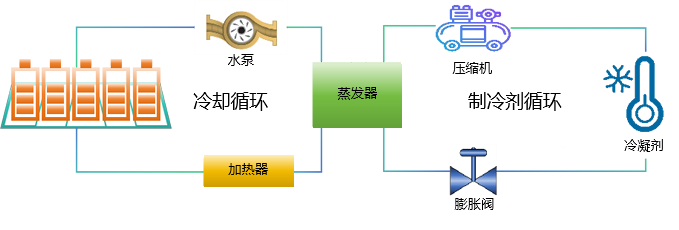
目标并竭力推动您的项目效益提升


电池储能系统是一种使用电池作为储能介质的储能系统。与传统化石燃料不同,电池储能系统可以储存太阳能和风能等可再生能源,并在需要平衡能源供需时释放它们。

随着源网侧储能电站及离网储能场景对大容量、大功率、高能量密度储能系统的需求不断地增长,液冷电池储能系统成为行业主流方案。此外,客户对ROI和还款期的关注进一步加速了高充放电率电池储能系统(BESS)的发展趋势。
更大的容量、更高功率密度、高充放电率使得系统热失控风险增高,因此对能源储存热管理的需求也追着增长,因此,储能热管理的换热效率也需要进一步提高。

制冷剂通过蒸发器释放电池冷板吸收的热量,然后将水泵运行产生的电力送入冷板吸收设备产生的热量。
在机组运行期间,蒸发器(板式换热器)通过制冷剂蒸发从其中冷媒循环系统吸收热量,其中冷媒的冷凝将热量释放到这些周围的空气环境中。冷凝的制冷剂通过膨胀阀返回蒸发器,循环测试过程反复进行。